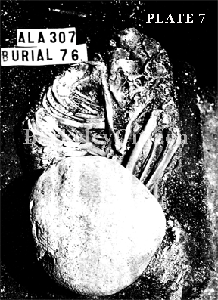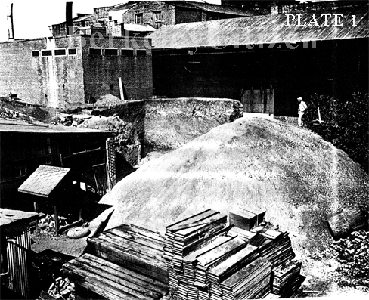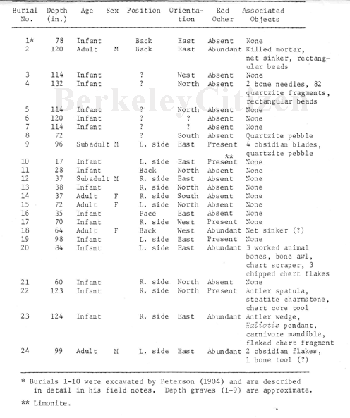
West Berkeley: A Culturally Stratified Shellmound on the East Shore of
San Francisco Bay
- ALSO SEE... American Indian Movement Dennis Banks Speaks Out Berkeley CA February 11, 2008
- Longest Walk 2 Spiritual Gathering Berkeley, CA February 11, 2008
- Ohlone
Burial Site Press Conference, Stadium Memorial Oak Grove, Berkeley - February 20, 2007
Our community is home to two historically significant shellmound sites: the Emeryville Mound at the foot of Powell Street and the West Berkeley Mound at the foot of University Avenue. These mounds, although now greatly damaged, were once of immense size - nearly 30 feet deep and over 600 feet long. Built up from ashes, shells, animal bones, artifacts, and human remains, they are a reminder that the East Bay has been home to people for thousands of years. Contributions of the University of California Archaeological Research Facility November 1975.
No. 29 West Berkeley: A Culturally Stratified Shellmound on the East Shore of San Francisco Bay
Preface
This report describes the excavation of the last intact portion of the West Berkeley shellmound, situated on the east shore of San Francisco Bay. The investigation was carried out by the University of California Archaeological Survey under the general supervision of its Director, Robert F. Heizer. Work began May 22, 1950, under Arnold Pilling, who remained in charge until the end of May, when Robert Greengo became field supervisor. Greengo was succeeded on June 18 by Donald W. Lathrap who directed the work for the rest of that month. During July, August and early September, William Wallace headed the field party. The other personnel consisted mainly of students, graduate and undergraduate, from the Department of Anthropology on the Berkeley Campus. Donald and Douglas McGeein, William Mueller, and Edith S. Taylor provided welcome volunteer service.
Permission to excavate was granted by Mrs. Lincoln Maclise, owner of the property, to whom grateful acknowledgement is made. A.E. Troiel, of Troiel Companies, Inc., occupant, cooperated with the field crew throughout. The success of the project owes much to him and to the workers in his factory, who were subjected to various inconveniences as a result of the digging.
The following pages present a revised and up - dated version of a detailed report on the shellmound excavation, completed in 1951. The descriptive parts of the original account remain largely unchanged. Only the introductory and concluding sections have been extensively rewritten.
Mortuary Practices
During the excavation of the West Berkeley shellmound, 95 more or less complete skeletons and a number of disassociated human bones were exhumed. Most of the skeletal material was in poor condition; many of the bones had be come badly decayed and crumbly , making exposure and removal difficult. The poor preservation can be explained by several factors. Many skeletons had been badly broken up as a result of lying in shallow graves and being subjected to pressure from human activity above; others had been disturbed by later aboriginal digging of graves or other pits . The cutting away of t he east section of the mound close t o a cemetery in order to make way for a railroad spur track exposed many skeletons to the forces of disintegration.
The prehistoric people habitually interred their dead directly in the village debris. It appears that burials were made in the midden during all stages of its formation for skeletons we re encountered at all levels, from about 2 feet 4 inches below the surface to the sub soil. Relatively few clearly defined burial pits or grave walls could be discerned. All where shallow (2-1 /2 to 3 feet deep), oval hollows, averaging about 24 by 36 inches in dimensions. Burials occurred in all parts of the mound but there were two areas, apparently cemeteries, in which they were concentrated. Unfortunately neither could be satisfactorily explored. The first layer on the midden's eastern fringe where operations had to be limited because of the danger of undermining a heavy wire fence and a railroad track. This cemetery yielded 7 skeletons, several badly disarranged, and deteriorated. Five others we re observed in the trench walls but could not be exposed. During bulldozing of the northern section, 20 skeletons or more were noted in a small space. It was possible to remove only 12, all severely damaged by the earth-moving operation.
 |
 |
The West Berkeley mound-dwellers placed corpses in the ground in a loosely flexed position with the arms bent so that the hands lay near the face (PI. 7). No customary direction of orientation could be detected. In 19 graves the skull was oriented to the west and in 23 to the east. Twenty-two showed the head placed in a northerly direction, 9 roughly toward the south. For 22 burials, orientation could not be determined or went unrecorded. A similar variation in the body 's position was noted. The skeleton lay on the right side in 33 instances, on the left in 23. Eight skeletons appeared to be on the back, six on the face; it is possible that some of the latter originally lay on the side but were shifted in the settling and movement consequent to decomposition. One interment was doubtfully reported in a sitting position. Placing more than one body in a grave does not seem to have been a common practice as only three occurrences were observed.
Depositing articles with the dead either was not a well-developed custom, or it was reserved for special individuals. Only 32 or the 95 burials had accompanying mortuary goods and of these at least five represent doubtful associations. In 11 graves, offerings remained limited to beads or ornaments. Objects of daily use were not regularly placed with the dead and the apparent intentional inclusion of animal remains were noted only three times. The "killing", or purposeful damaging, of burial objects was reported once -- a mortar accompanying Burial 2 had a hole knocked through its base. Forty-three bodies showed signs of powdered pigment. For 42 burials, this consisted of red ocher or hematite; one (Burial 10) had traces of ye1low,-brovn limonite. In only 13 graves was the red ocher profuse. There is no need to describe the burials in detail since the data for each are presented in Table 9, but Burial 32, a young adult male, probably merits special attention. It was the only one which accompanied a fair number of burial gifts. Two large obsidian blades and a pair made from a white chertlike material, as well as an antler wedge and a grooved net sinker, were found in the grave. Red ocher colored most of the bones and the bases of the two obsidian blades.
The practice of laying burials in a flexed position in refuse mounds was a common procedure in prehistoric California. All San Francisco Bay sites thus far reported upon have yielded flexed burials. At Emeryville this seems to have been the universal rule and, as at West Berkeley, little attention was given to orientation or position of the torso (Schenck 1926:197). For Ellis Landing, flexure was the prevailing method, again with no observance of cardinal direction (Nelson 1910:382). Several skeletons at this site lay stretched out instead of contracted. The occurrence of human remains is reported for the Stege mounds but no information on body posture is given (Loud 1924: 360). At San Bruno both flexed burials and cremation were noted (Drake 1948:319). In the Bay shellmounds only a small percentage of graves contained artifacts and these when found were frequently restricted to shell beads and ornaments. The use of red ocher was general.
A sequence of burial techniques has been worked out for interior Central California. Burials fully extended on the ventral side and oriented west characterize the Early horizon; flexed burials, usually tightly contracted, appear in the Middle horizon with some cremations; both cremation and flexed interment were practiced by the Late people with cremation becoming more frequent with the passage of time (Heizer and Fenenga 1939:385), A sequence has been suggested for the Bay and coast dwellers, with loose flexure, variable orientation and disposition, and scanty mortuary offerings characterizing
Middle sites and these practices carrying over without marked change into the Late horizon, Phase I. Cremation appears to have been introduced in Late, Phase II times, just before European contact. The significance of sporadic extended burials in Bay shellmounds is not known.
Table N0. 9 |
 |
Animal and Bird Burials
Near the base or the mound, at a depth of 182 inches, lay half of a coyote skeleton. The animal had been placed in a shallow depression and purposefully covered over. Its remains lay in an anatomical articulation, suggesting that the coyote was buried after having been halved longitudinally. This may represent an interment of an animal, ceremonially raised and killed. Thirteen coyote burials, some with offerings, have been reported from Late and Middle horizon sites in the Valley (Heizer and Hewes 1940 :589-590). The hindquarters of four were missing. Special postmortem disposal of other mammal species has also been noted in the interior region.
An almost completely articulated skeleton, consisting of the entire skull and mandible and most of the post cranial bones of a large raptorial bird was uncovered 123 inches down in the refuse. The remains were identified as those of a California Condor, the state’s largest living bird. The completeness of the skeleton again implies special or ritual sepulture, perhaps mortuary treatment similar to that accorded humans (Wallace and Lathrap 1959). The bones of the large carnivorous birds , eagles , hawks, and condors , have been unearthed elsewhere in California under conditions suggesting careful postmortem treatment . Ethnographic data indicate ritual disposal of birds killed during ceremonies by recent California Indians (Heizer and Hewes 1940:391). A fairly large number of condor bones were encountered at Emeryville (Howard 1929: 314), all
of the elements except one collected within the same small area and apparently representing a single individual. This may also have been an interment.
A second bird skeleton proved to be a member of the Anatidae Family (ducks, geese). The skull had been badly crushed and was lying on the vertebrae. This probably does not represent an intentional burial but is merely a fowl which for some reason was not eaten after its capture.
Subsistence Remains
The enormous mass of molluscan valves contained in the West Berkeley midden shows that shellfish collecting remained the constant and principal means or gaining a livelihood throughout the period of occupation. The earliest inhabitants gathered vast quantities of
mussels and oysters, both obtainable with relatively little effort and without special tools. Mussels were to be had merely by pulling them off rocks: oysters needed only to be scooped up at low tide from gravel bars. Later, clams replaced oysters as an important food item though an emphasis upon mussels continued (Appendix A). Procuring clams proved more arduous, for they had to be dug from mud and sand.
All Rights Reserved